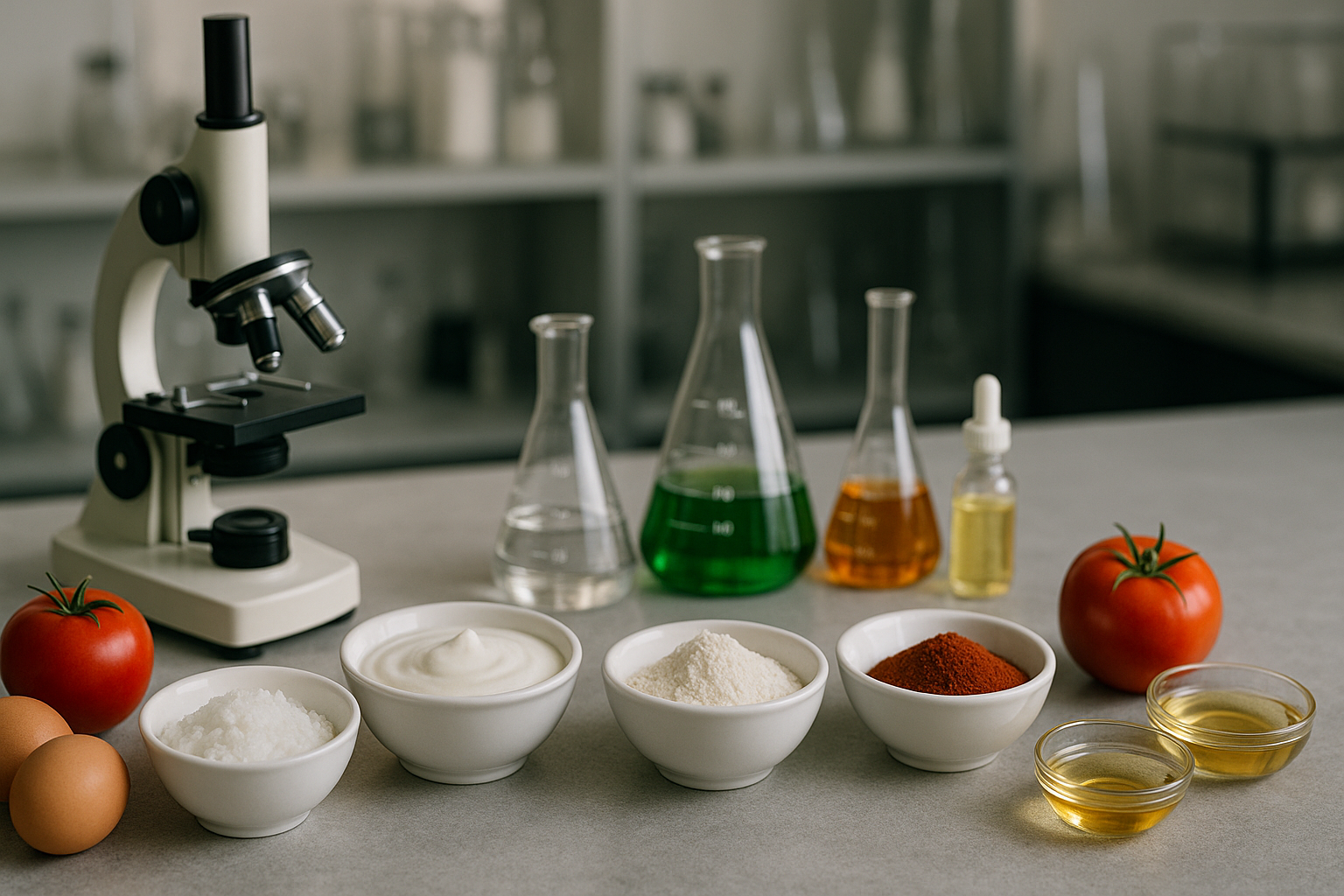Introduction
Konjac, also known as glucomannan, is a powerful soluble fiber from the corm of the konjac plant (Amorphophallus konjac). It absorbs many times its weight in water to create viscous solutions and strong, elastic gels. In modern cooking it’s used for low-calorie noodles (shirataki), gluten-free baking, vegan meats, sauces, and gels; in nutrition it’s prized for satiety and digestive support.
What is Konjac (Glucomannan)?
Konjac flour is milled from dried konjac corms; its active component, glucomannan, is a high-molecular-weight polysaccharide that thickens at very low use levels and can form heat-set, thermally stable gels—especially in the presence of alkali (e.g., calcium hydroxide) or when combined with certain hydrocolloids.
Quick Answers About Konjac
Is konjac safe to eat?
Yes. Konjac is widely approved for food use. For supplements or shirataki noodles, it should always be taken with water to avoid choking risk.
Why are shirataki noodles so low in calories?
They’re made mostly of water and konjac glucomannan fiber. This provides texture with almost no digestible carbs, making them extremely low-calorie.
Can konjac help in gluten-free baking?
Yes. Small amounts add structure and moisture to gluten-free baked goods. It works best when combined with starches or gums.
How do I make firm konnyaku-style gels?
Disperse konjac powder, add a mild alkali such as calcium hydroxide, then heat. This creates elastic, heat-stable konnyaku gels.
Does konjac work with other gums?
Yes. Konjac has strong synergy with kappa carrageenan for elastic gels, and with xanthan gum for higher-viscosity blends.
How should konjac be stored?
Store in a cool, dry, airtight container away from moisture and odors. Shelf life is typically 18–24 months unopened.
How is Konjac Made?
- Harvest & Dry: Corms are peeled, sliced, and dried.
- Mill: Dried pieces are ground into konjac flour or refined to glucomannan powder.
- Standardize: Particle size and purity are adjusted for food use (noodles, gels, bakery, beverages).
For firm, elastic konnyaku-style gels, konjac is dispersed in water then set with a mild alkali (often calcium hydroxide) and heated.
Culinary Uses of Konjac
- Shirataki & Konnyaku: Very low-calorie noodles and firm gel blocks.
- Vegan/Vegetarian: Adds bite and binding in patties, dumplings, and seafood analogs.
- Gluten-Free Baking: Improves moisture retention and crumb in breads and cakes.
- Sauces & Beverages: Thickens at low levels without clouding flavor.
- Confectionery Gels: Thermally stable gels for jellies and gummies (often with carrageenan).
Benefits & Functional Properties
- High water binding: Strong thickening at 0.1–0.5%.
- Elastic, heat-stable gels: Especially with alkali or in blends (e.g., κ-carrageenan).
- Clean label: Plant-derived, gluten-free, vegan.
- Neutral flavor: Minimal impact on taste and color.
- Process tolerant: Works across wide temperature ranges when properly hydrated.
Usage Tips & Starter Rates
- Disperse first: Premix with sugar or other dry ingredients; sprinkle into fast-moving liquid to avoid lumps.
- Hydrate cold, set hot: Allow 5–10 minutes for hydration; heat and/or add alkali for firm gels.
- Starter use levels: 0.1–0.5% for thickening; 0.8–1.5% for firm gels; 2–3% for konnyaku-style textures.
- Synergy: Blend with κ-carrageenan for elastic, heat-stable gels.
- Safety note (supplements): Always consume with adequate water.
Where to Buy Konjac
Find food-grade konjac/glucomannan and companion hydrocolloids at Cape Crystal Brands. 👉 Shop Konjac / Glucomannan
Related Functional Additives
Check out other ingredients used for emulsifying, stabilizing, or improving food structure:
Frequently Asked Questions (FAQs)
Is konjac safe to eat?
Yes. It’s widely approved for food use. For supplements, take with water to prevent choking.
Why are shirataki noodles so low in calories?
They’re mostly water bound by glucomannan fiber, delivering texture with minimal calories and carbs.
Can konjac help in gluten-free baking?
Yes. Small amounts improve moisture and structure; combine with starches or gums for best results.
How do I make firm konnyaku-style gels?
Disperse konjac, add a mild alkali such as calcium hydroxide, then heat to set for an elastic, heat-stable gel.
Does konjac work with other gums?
It shows strong synergy with κ-carrageenan for elastic, thermally stable gels; blends with xanthan can also enhance viscosity.
Typical storage & shelf life?
Cool, dry, airtight storage away from odors and humidity; check your supplier’s spec—often 18–24 months unopened.
Keep Learning with Cape Crystal Brands





